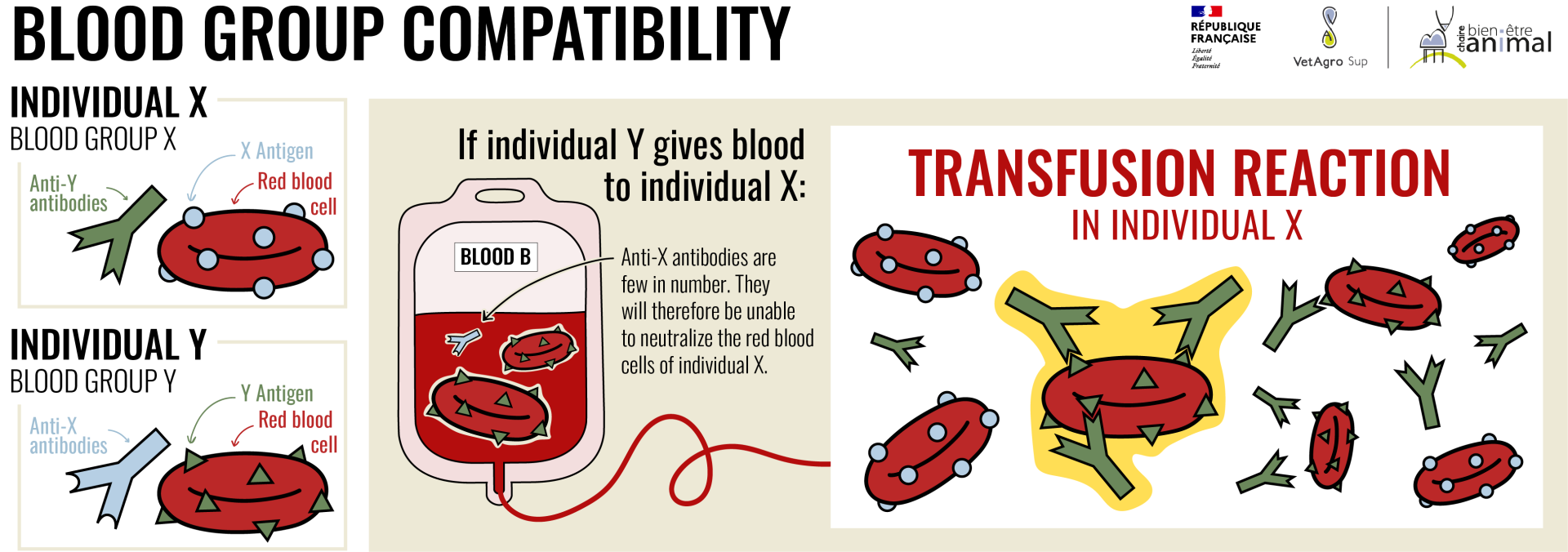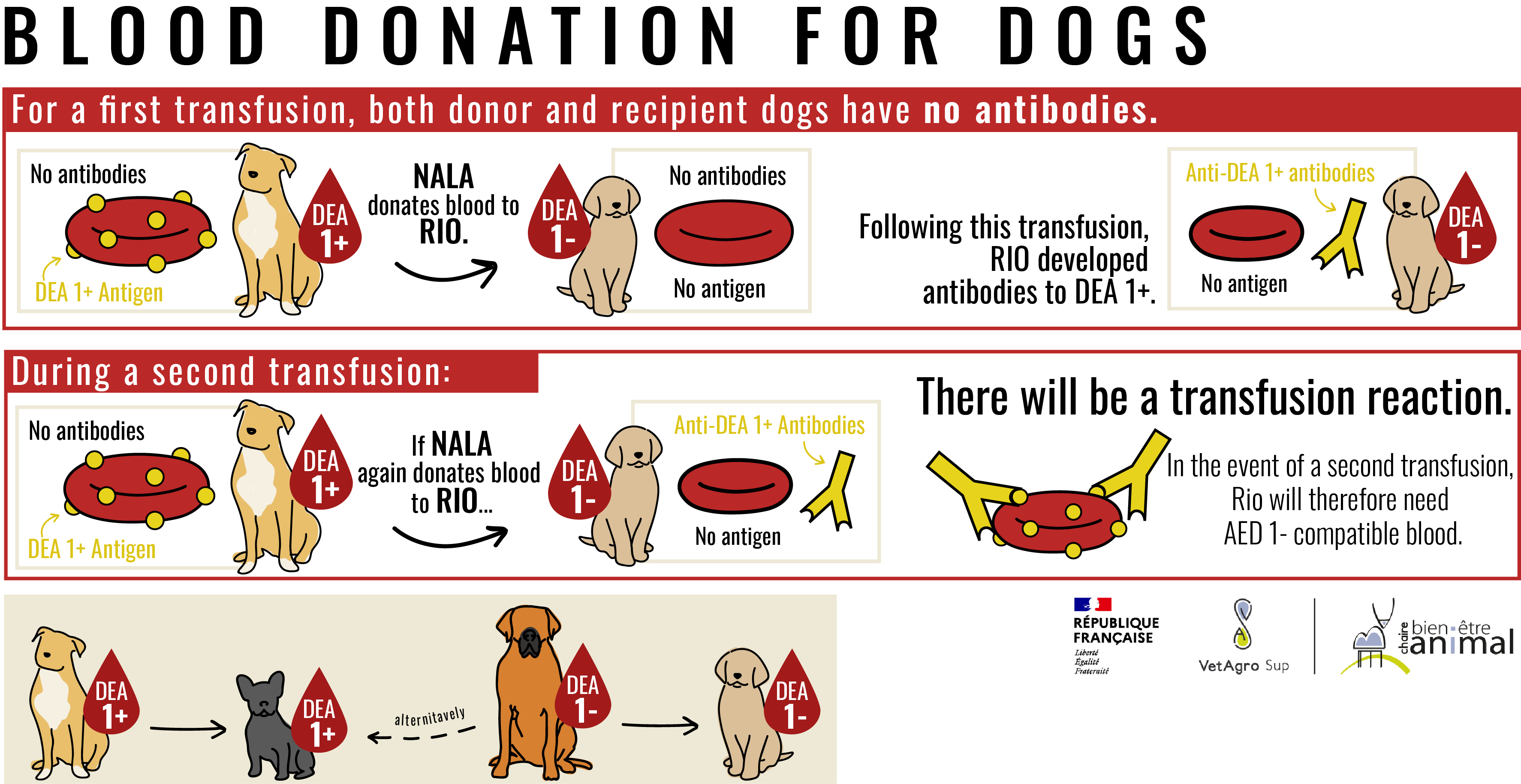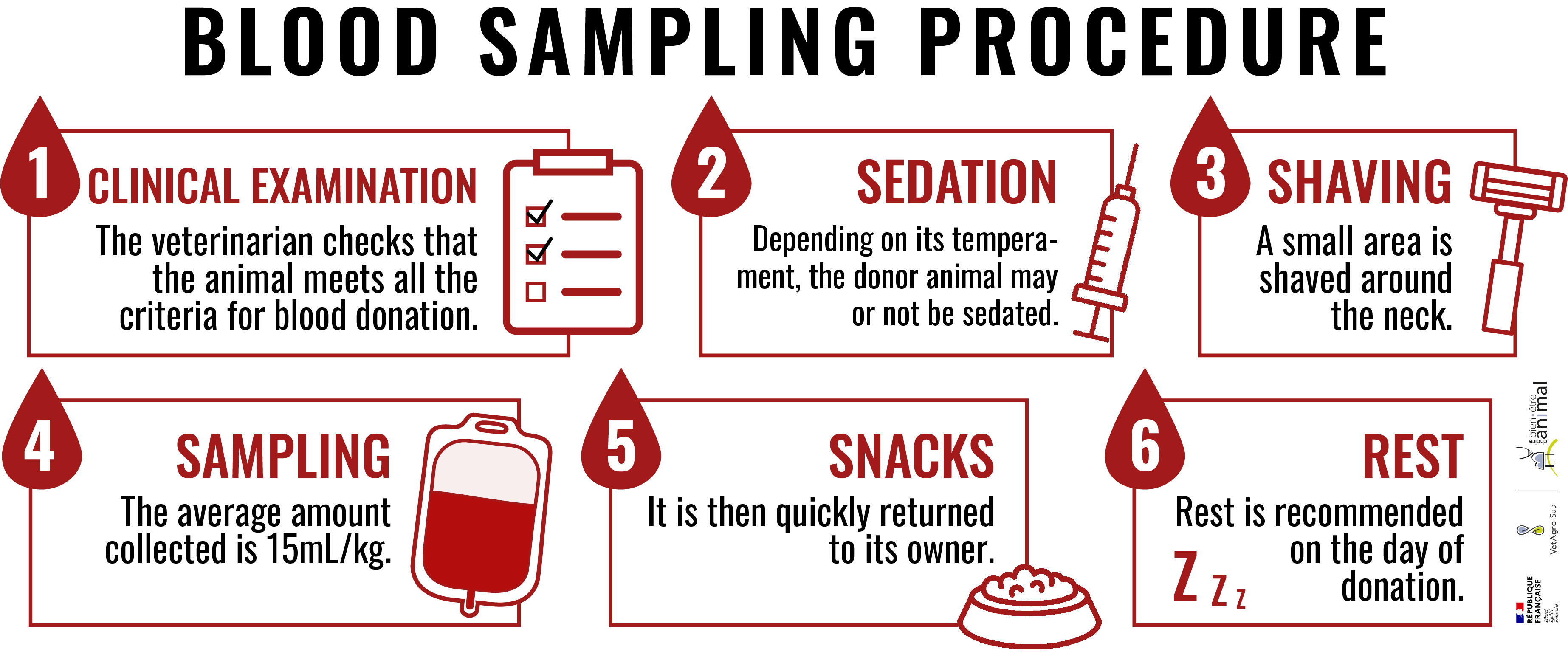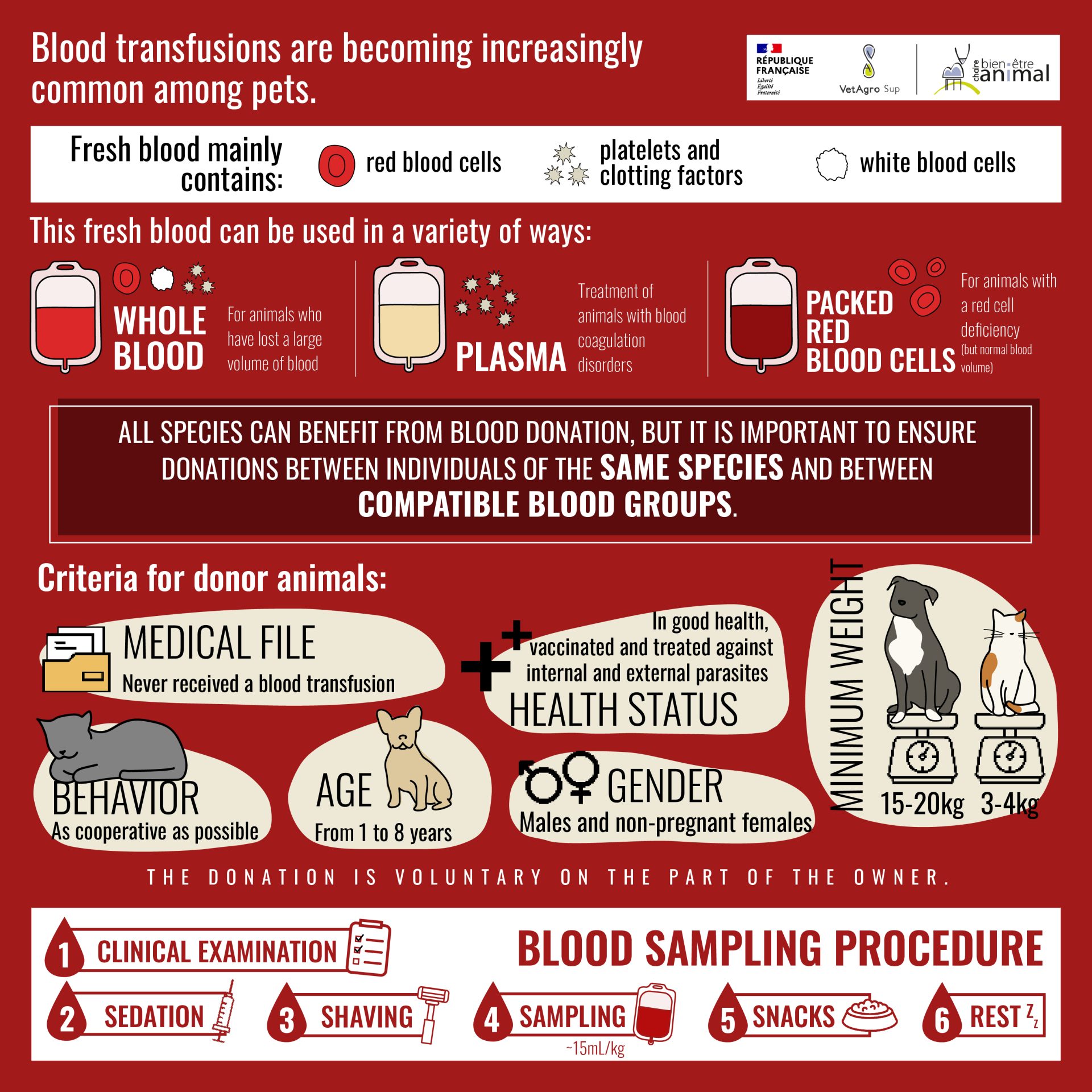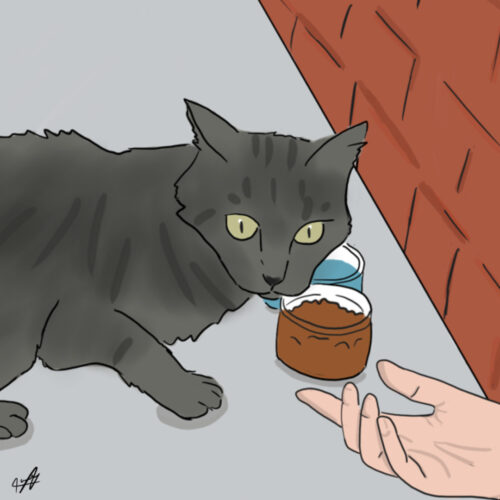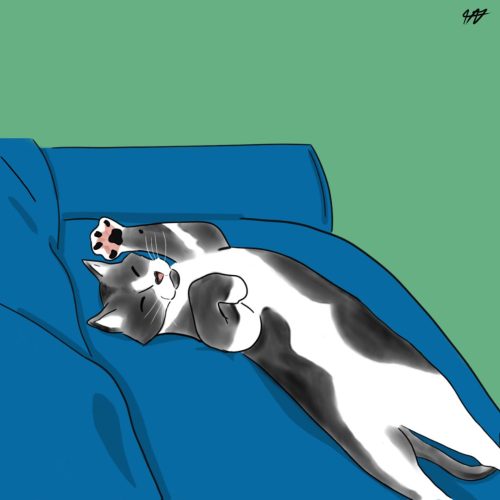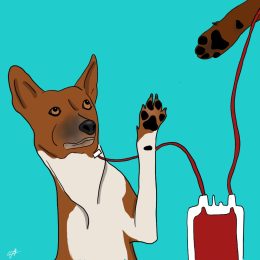

FALSE
Blood transfusions are becoming increasingly common among pets.
For several years now, major veterinary schools and facilities have been developing blood banks to meet the growing need for blood transfusions in veterinary medicine.
Keep in mind
- Some animals may need a transfusion following an accident or illness
- Blood banks make it possible to be prepared in case of an emergency requiring a transfusion
- Blood banks are mainly for dogs and cats
- Determining your dog's or cat's blood type is important to prevent transfusion reactions in case of an emergency.
The reason may be hemorrhage caused by an accident or surgery, intoxication or illness affecting the production of certain blood cells. In recent years, the use of blood donation (also known as “blood transfusion”) in veterinary medicine has become increasingly frequent. This trend is directly linked to the increasing medicalization of pets and their longer life expectancy.
To meet this demand and safeguard the health and welfare of our pets, SIAMU (emergency, resuscitation and intensive care for companion animals) and CHUVAC (university veterinary hospital for companion animals), as well as other large-scale veterinary facilities, have set up blood banks for the most commonly treated species: dogs and cats.
Small clinics can also perform blood transfusions. To do so, they can rely on animals from their team, or even their clientele’s.
Blood composition
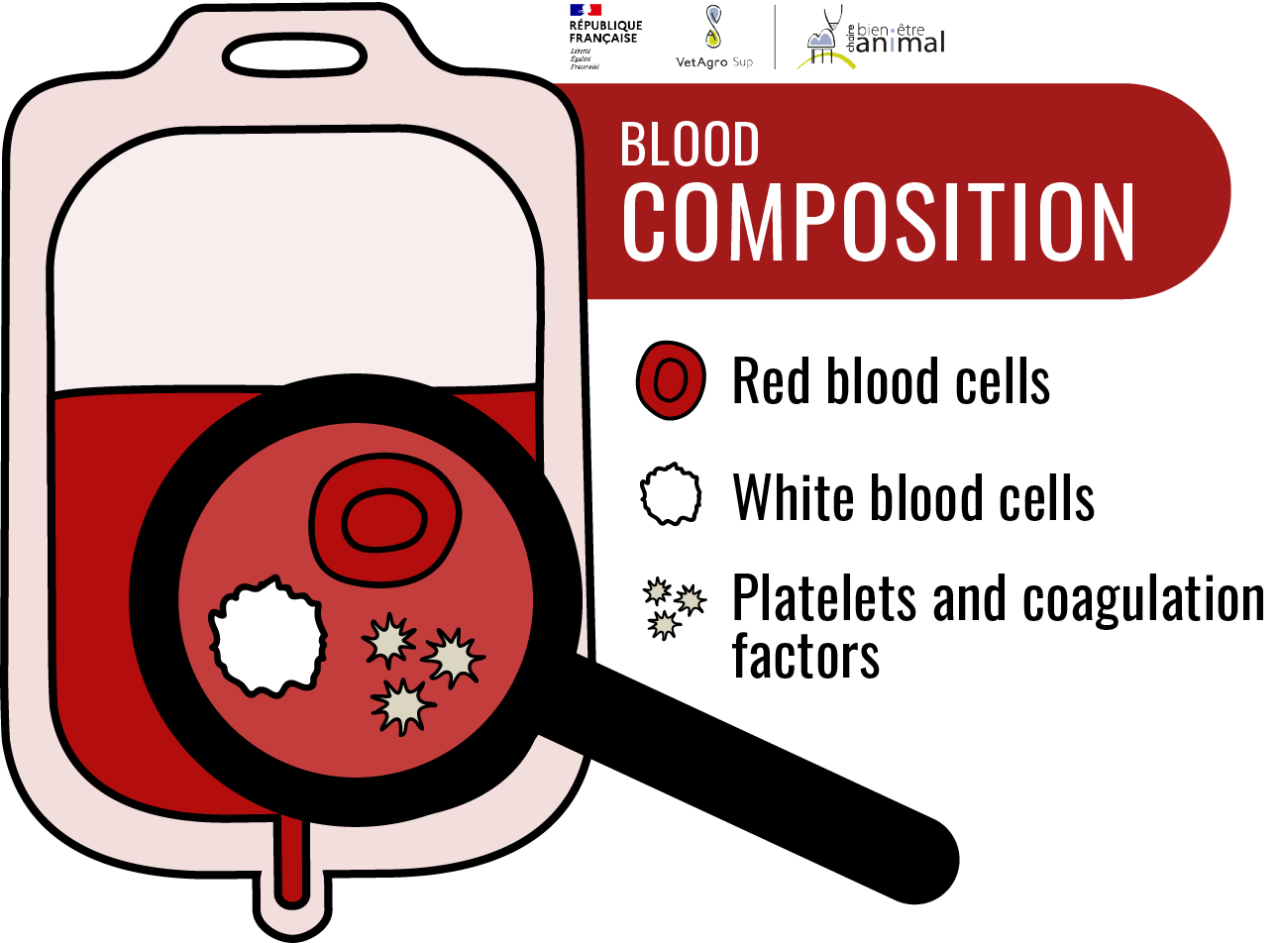
Fresh blood contains mainly red blood cells, white blood cells, coagulation factors and platelets. It can be used immediately after collection, or stored as is for up to 35 days (at 4°C): this is known as “whole blood“. Whole blood is needed to treat animals that have suffered severe hemorrhage and lost a large volume of blood and red blood cells (known as traumatic anemia).
Centrifuging fresh blood separates its various components[3] : a blood sample can thus be optimized and save multiple lives, depending on the elements needed!
- Plasma is rich in platelets and coagulation factors. Plasma is useful for treating animals with blood clotting disorders. Platelets and coagulation factors work together to help form a blood clot and stop bleeding. If frozen within 6 hours of collection, it can be stored for up to 5 years (at temperatures below -30°C).
- Packed red blood cells are rich in red blood cells (erythroid cells). It is used in patients with normal blood volume (no hemorrhage) who, for whatever reason, have a red cell deficiency. Red cell concentrate can be stored for up to 42 days (at 4°C).
Blood group compatibility in dogs and cats:
All species can benefit from blood donation, but donor and recipient must be individuals of the same species and have compatible blood groups. It is therefore essential to know the blood type of both donor and recipient before any transfusion[4].
It’s the red blood cells that determine an individual’s blood group, and more precisely the molecules found on their surface: the antigens. After a transfusion, if the recipient’s blood group is different from the donor’s, foreign antigens are detected by antibodies, which bind to them and destroy the transfused red blood cells: this is known as transfusion reaction.
If you are unaware of your dog’s or cat’s blood type, a test can be done at your vet’s in less than 10 minutes!
Cats
There are 3 different blood types in cats: A, B and AB. Blood group A is the most common, group B is less frequent and group AB even less frequent.
Cats have natural alloantibodies[5], which means they spontaneously have antibodies to red blood cells of other blood groups. So, as in the case for humans, a cat with blood group A has antibodies against type B red blood cells: it cannot receive blood from group B. The reverse is also true: a group B cat cannot receive blood from group A.
A cat with blood group AB is an exception to this rule: it has both A and B antigens on the surface of its red blood cells, but no antibodies! Ideally, the cat should be transfused with blood of the same group, i.e. AB. Otherwise, since B antibodies are less frequent and have a weaker action than A antibodies, it can be transfused with group A blood.
As you can see, in the event of an emergency, it is essential to know the recipient cat’s blood group, so that it can receive blood of the same type as its own! Knowing this beforehand can save precious time!
Dogs
To date, no fewer than 5 blood types have been identified in dogs, named DEA 1, 3, 4, 5 and 7 (DEA stands for Dog Erythrocyte Antigen, Dog Erythrocyte Antigen). For each of these, a dog can be either positive or negative, i.e. possess or not the corresponding antigen on the surface of its red blood cells. A dog can thus display several antigens simultaneously and independently (e.g. DEA 1-, DEA 3-, DEA 4+, DEA 5-, DEA 7-).
In practice, only the most immunogenic DEA1 antigen is taken into account, as it can cause a severe transfusion reaction. Unlike DEA1+ dogs, DEA1- dogs have red blood cells without DEA1 antigen on their surface. This means that their red blood cells have no DEA1 markers – which enable the recipient dog’s immune system to identify and destroy them – on their surface.
Unlike cats, dogs have no natural alloantibodies to red blood cells of a different group than their own. This is why, in extreme emergencies, if and only if the dog has never been transfused before in its life, it can receive blood from a different group.
On the other hand, this exposure to red blood cells of a foreign blood group will induce the production of specific antibodies, and the dog will react negatively to another transfusion with blood of a different group. This means that, should the dog require transfusion again during its lifetime, it will have to be from its own blood group. Failing to do so would mean risking a transfusion reaction, even if it had been transfused with compatible DEA1 blood before.
Serological compatibility between recipient and donor is then determined using a transfusion compatibility test, also known as a crossmatch.
Who can donate blood?
Dogs and cats who donate blood belong to private owners only! Donation is voluntary on the part of the owner.
A potential donor must meet a certain number of criteria:
- Age: 1 to 8 years;
- Minimum weight: 3-4kg for cats, 15-20kg for dogs. The animal must not be overweight;
- Sex: males and non-pregnant females.
- Health status: healthy, vaccinated and treated against internal and external parasites.
- Medical records: the donor must not have received a blood transfusion.
- Behavior: as cooperative as possible.
From a biological point of view, dogs and cats can donate every 3 months without endangering their health. However, in practice, an animal on the donor lists is only asked to donate once or twice a year.
Although donor lists are often well-stocked, the availability of donors sometimes makes it difficult to supply blood banks: if your pet meets the above criteria, don’t hesitate to contact your nearest veterinary care center to put it on the list of potential donors!
Blood sampling procedure
Given the short storage times, only a few bags of each blood type are kept in the blood bank. Stocks are replenished on an ongoing basis: as soon as a bag is empty, the veterinary clinic contacts the owners on the donor lists for any given group to arrange for new donations!
The visit always begins with a clinical examination, during which the animal’s health status is rigorously assessed. If all criteria are met, the collection procedure can begin. Depending on its temperament, the donor animal may or may not be sedated for a short time: this helps to limit stress, and thus preserve its welfare. Next, a small area of the neck is shaved, and blood is collected from the jugular vein. On average, 15ml/kg is withdrawn. By way of comparison, the volume withdrawn during a blood donation in human medicine is 7mL/kg on average[6].
The donation (including preparation and anesthesia) takes around 30 minutes, but the collection itself lasts only a few minutes. Depending on blood stocks, the collected blood can be stored as whole blood, plasma or packed red cells (see “Blood and its components” above).
After collection, or when the donor wakes up, its cooperation is rewarded with a snack! To ensure the donor’s welfare, the animal is quickly returned to familiar surroundings. Although the majority of donors are in perfect shape following the donation, rest is recommended on the day of the donation.
📌 What about other species?
While it is possible to anticipate transfusion needs for dogs and cats, for other species, management is specific to each structure.
At VetAgro Sup, the ClinEquine has two horses dedicated exclusively to blood donation. These two geldings[7] are part of the veterinary school’s teaching herd. They live in a meadow with companions, shelter, access to grass and hay, and are under daily supervision.
Sampling frequency depends on:
- The date and volume of the last blood sample. A 500 kg adult horse has a physiological blood volume of 8% of its live weight (i.e. 40 L). For a one-off blood sample, the horse will clinically tolerate a volume of 7L to 12L every month!
- Blood transfusions in horses are much less frequent than in domestic carnivores. For instance, 6 to 10 whole blood transfusions are carried out at VetAgro Sup’s ClinEquine every year[8].
Horses have 7 different blood groups (A, C, D, K, P, Q and U), determined by some thirty different antigens. Because of the diversity of existing combinations, there is no universal donor for horses[9].
For emergency transfusions, either the official donor’s blood group is known or, in private clinics, transfusion is carried out without knowing the donor’s blood group. Nevertheless, donor-recipient compatibility tests can be carried out (rapid cross-match tests).
The risk of transfusion reaction increases with repeated blood transfusions and in the presence of different equine species (donkey, mule, horse).
In short
Article written in collaboration with Céline POUZOT-NEVORET, specialist in emergency and intensive care, head of the Emergency and Intensive Care Service (SIAMU) at the Lyon Veterinary School (VetAgro Sup) and Isabelle DESJARDINS, specialist in internal medicine and intensive care, head of the Equine Emergency and Intensive Care Center (CUSI) at the Lyon Veterinary School (VetAgro Sup).
[1] https://www.ifop.com/publication/les-francais-animaux-de-compagnie-frais-veterinaires/
[2] https://www.depecheveterinaire.com/le-barometre-royal-canin-sur-les-francais-et-leurs-animaux-confirme-la-medicalisation-croissante_6798487AAC5D9A5B.html
[3] https://www.vetagro-sup.fr/banque-de-sang-animaux-de-compagnie/?fbclid=IwAR1VMcK7wSoSfmGvHYHEwEMoXA67pMIPOZgDQe9v5ZreY4MuNqjnyHKcMTQ_aem_AYjC9bv94Rl0A4uAAwZugmcYvlH6an035cMNvq3dLiXUqGn5pYzu_sPgMxx8uIJgul1bHhv4E1j48xaTJhhgoplj
[4] Davidow EB, Blois SL, Goy-Thollot I, et al. Association of Veterinary Hematology and Transfusion Medicine (AVHTM) Transfusion Reaction Small Animal Consensus Statement (TRACS). Part One: Definitions and clinical signs. J Vet Emerg Crit Care. 2021; 31: 141–166. https://doi.org/10.1111/vec.13044
[5] Antibodies produced by the immune system against antigens (molecules present on the surface of a cell) in red blood cells from another individual.
[6] https://dondesang.efs.sante.fr/faq
[7]A gelding is a castrated male horse.
[8] Platelet-rich plasma and packed red blood cells are not available for horses.
[9] https://www.lepointveterinaire.fr/publications/pratique-veterinaire-equine/article/n-210/quand-et-comment-realiser-une-transfusion-chez-le-cheval.html
Keep in mind
- Some animals may need a transfusion following an accident or illness
- Blood banks make it possible to be prepared in case of an emergency requiring a transfusion
- Blood banks are mainly for dogs and cats
- Determining your dog's or cat's blood type is important to prevent transfusion reactions in case of an emergency
Key Figure
This is the number of different dog blood types



